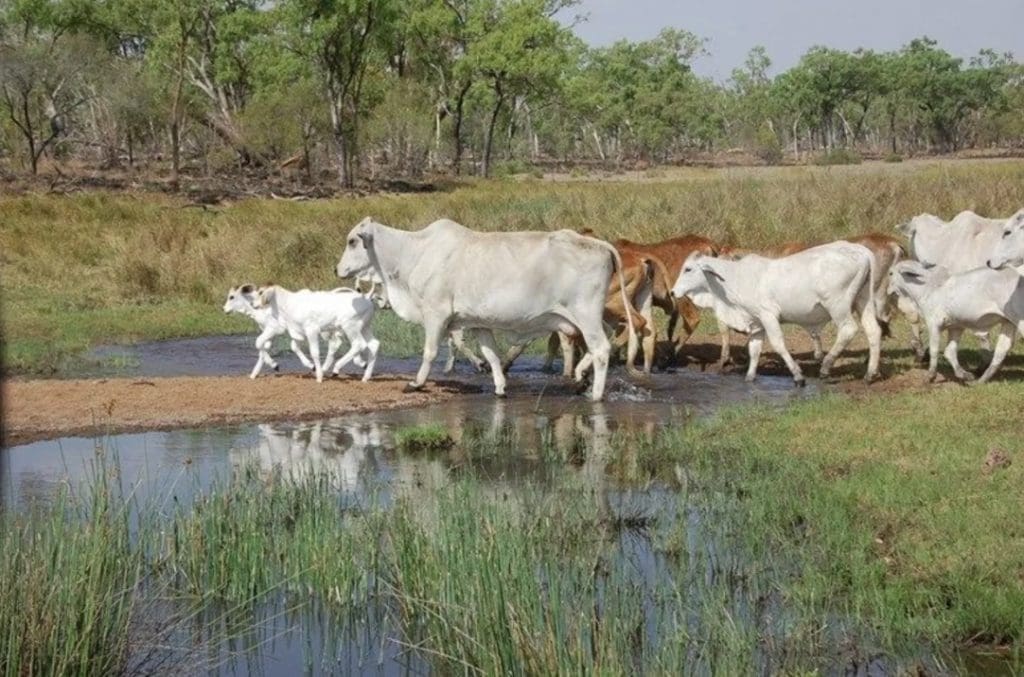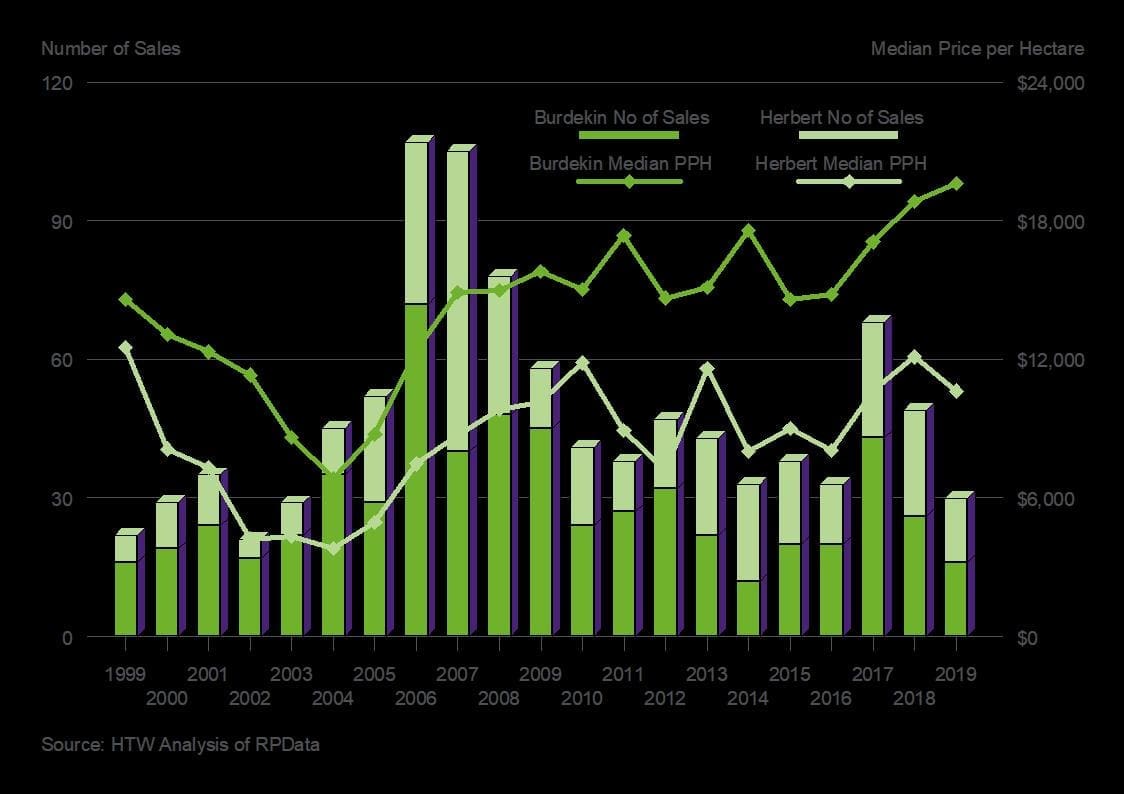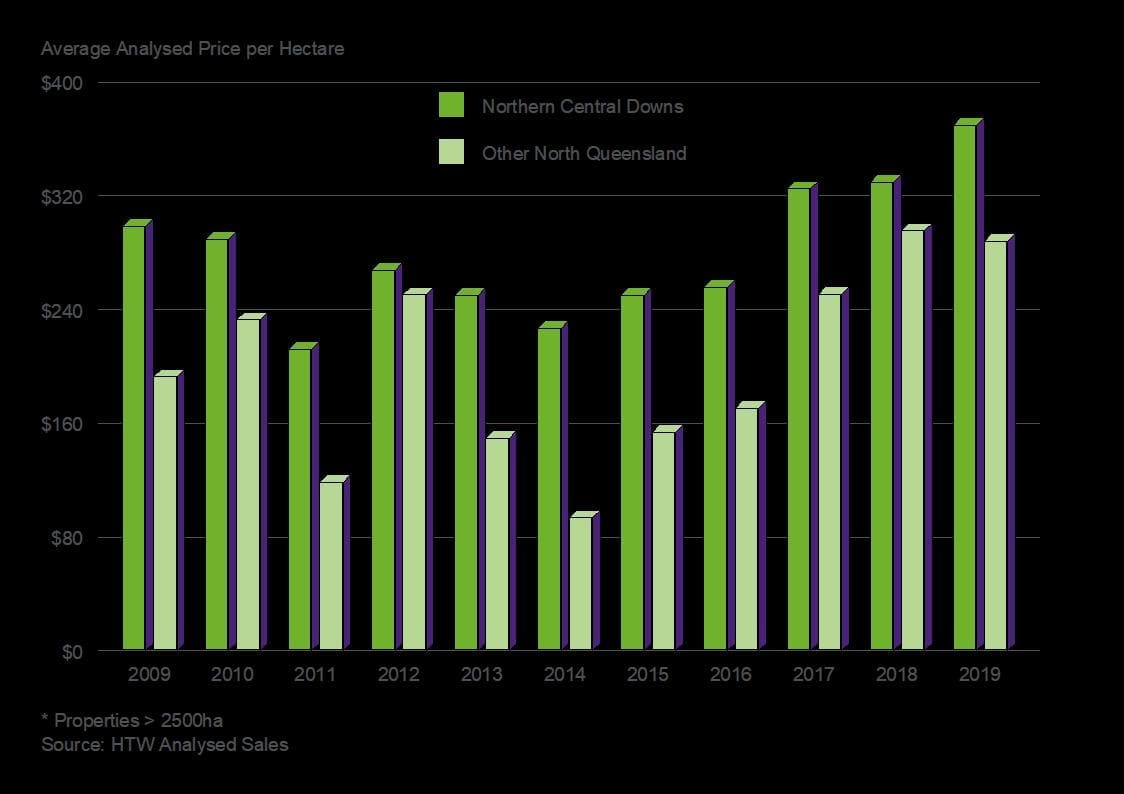In the face of COVID-19 and a global protein shortage due to African Swine Flu, this week’s property review examines their possible impact of global financial stress on the rural property market, using north and north west Queensland as a case study.

Roger Hill HTW
AUSTRALIA is in an enviable position. It grows food and lots of it, and the world certainly needs to eat. However, this is not to say that Australian agriculture is suddenly the ‘boom sector’ in the face of the coronavirus pandemic.
Herron Todd White’s north Queensland regional property valuer Roger Hill said on a day-to-day basis, rural property markets have been hot lately, but there are short to medium-term risks:
- Supply chain issues for imported inputs (sprays, fertilisers, tyres, fence posts, steel) and exported products (including beef and live cattle).
- There may even be delays in the access to capital as the risk affection of the broader capital market is digested.
Mr Hill suggested that this is a time for rational property transaction decision making, not emotionally-charged sales or acquisition prices.
“Unlike the volatile share market, agricultural property markets behave differently at times of global economic shock. It is interesting to note the difference in the market direction of North Queensland sugar cane farmland and beef cattle land values, in the post global financial crisis period since 2008,” he said.
In the post GFC period, in North Queensland, on the back of depleted global sugar stockpiles and beneficial exchange rates, cane farm values recovered from a slump in 2004 and continued to rise right through the Global Financial Crisis period (2007/08) to 2009/10, where they effectively plateaued until recent times, Mr Hill said.
Cane farm sales and price trend
In contrast, the following graph shows the steadier repricing of beef grazing property values during 2009/2010, in the aftermath of the GFC.
“Other market influences then emerged (2011 live export ban, drought and floods) that influenced the property price cycle over time,” Mr Hill said.
“In recent years, values have been increasing to a point where in recent months, some market activity has been pushing to new levels, and has been perceived by some as being bullish and risky,” he said.
NQ grazing property values*
Mr Hill said the immediate impact of the GFC saw the number of cattle station sales slow.
“Then there was an influx of global capital into North Queensland grazing property assets. This was to hedge against losses in other global investment sectors. This boded-well for the larger scale property market sectors.”
“In the family-scale market segments, there was an initial stalemate between purchaser’s and vendors. As time moved on, good quality country sold well, and values for secondary country types started to soften,” Mr Hill said.
2020 dynamics
He said there were different dynamics for beef this time, compared with the GFC in 2008, and they included:
- Global protein shortage as a result of the African Swine Flu.
- As interest rates softened over the past two years, the demand and value of north Queensland beef cattle stations increased. The pool of buyers has increased as the perception is that they can afford to buy another property.
- Rain has had a two-pronged affect.
- There is now a strong restocker demand for cattle which will help shield the industry from shipping and trade disruptions while the COVID-19 plays out.
- The rain down south will reduce the property market demand from southerners.
Mr Hill believes these two factors may replace each other to some extent.
“Northerners may look to buy new country now, due to the good sale prices they are getting for cattle. They didn’t have to sell breeders. That’s not to say the region didn’t endure dry periods. Producers were able to hold on to more cattle and didn’t have to sell down as harshly.”
Last year, Mr Hill noted that from August to November, many producers had to cull heifers sitting in paddocks bound for overseas.
“With the promise of a season, they put bulls in with the heifers and are now selling them to the restocker market as PTIC heifers – a market which has gone through the roof due to recent rain in the south.”
Mr Hill said North Queensland was scoring tries restocking the south following the rain, in the light of coronavirus, the African Swine Flu and the low interest rate environment.
“The Australian beef industry is confident about growing international demand following the almost incomprehensible scale of the pig slaughter across Asia due to African Swine Flu. Aided by drought-induced reductions in the supply of finished cattle, recent rain has increased southern grazing demand for restocking.”
Buyers
Mr Hill identified three current local North Queensland buyer types:
- Backgrounders with downs country looking to find reasonable, smaller to mid-sized forest breeding country to put their breeders on.
- Breeders looking to expand their breeding capacity with northern mid-scale properties.
- Producers in the mid-scale forest breeding country seeking a backgrounding property on the downs country.
Prices
Last year, the North Queensland grazing property market started to rise at a faster rate. The primary reason was that southern buyers were out-bidding the locals who knew the country.
A recent example was Greenvale’s Marionvale which sold at auction to producers from Roma, in the state’s south west, for expansion.
Located 130km from Mt Garnet and boasting premium basalt grazing in the tightly held Valley of Lagoons area of North Queensland, the 16,000ha property exceeded expectations selling for $11.45m ($9.5m or $591/ha bare).

Located 130km from Mt Garnet, the 16,000ha Mationvale exceeded expectations selling for $11.45m ($9.5m or $591/ha bare).
Despite the premiums, Mr Hill said peers in the national marketplace and in the global spectrum agree that the region is in good stead and ‘on the money’.
“Pent-up demand for standalone or expansion blocks from buyers who have missed out could drive up prices once the initial COVID-19 shock is navigated,” he said.
While supply of property for sale is low, Mr Hill admitted prices, pushed up by southern buyers, is luring some vendors to the market.
“Initially, purchasers were saying, ‘that’s way too much for that property, I’m not paying that’. Now, I have some good old stable hands saying, ‘if I want to acquire that property, I am going to have to pay that much money’. It has become the new market norm.”
However, Mr Hill said the north and north west Queensland property market was not silly.
“Just because some of the market speculation is bullish, buyers are not going to pay big money for second-grade country. That behaviour was evident in 2006-08. At this point, the market will pay good money for good quality country (based on pasture condition, fencing and improvements).”
Demographic shift
With many priced out of their own local market, Mr Hill has noticed some Central Queenslanders are acquiring larger, cheaper holdings further west because they offer good, affordable expansion.
“There has been a shift away from the highly valued, expensive brigalow soils. Producers having trouble expanding locally at $5000 a beast area are hedging their bets and purchasing a cheaper block elsewhere so they can get a better figurative return and sort out their balance sheets.”
The year ahead
Mr Hill believes North and Northwest Queensland will roll out a cracker year in 2020, once the COVID-19 economic shock and risks have been overcome.
“There is pent up local purchaser demand – locals who turned up to auctions last year with all their ducks lined up, ready to buy. Luckily, they had a sensible price in mind, and when the southerners came in and bid, they left the auction room.”
Mr Hill said the region will experience some rational pricing mainly due to strong commodity prices and the low cost of capital.
“With the African Swine Flu creating a protein deficit in China, low domestic cattle numbers and southern rain, North Queensland has competitive markets to supply the domestic market with restockers until trade disruptions settle from the initial COVID-19 shock and then the world will still need a feed.”
While the cattle property market is looking good in the face of adversity, he said buyers must ensure their purchases are based on business fundamentals, with adequate provisions for any potential risks ahead.
“Any emotionally charged acquisitions could lead to unfortunate and destructive situations if or when the dynamics of the game changes.”



Nicely stated, Roger.